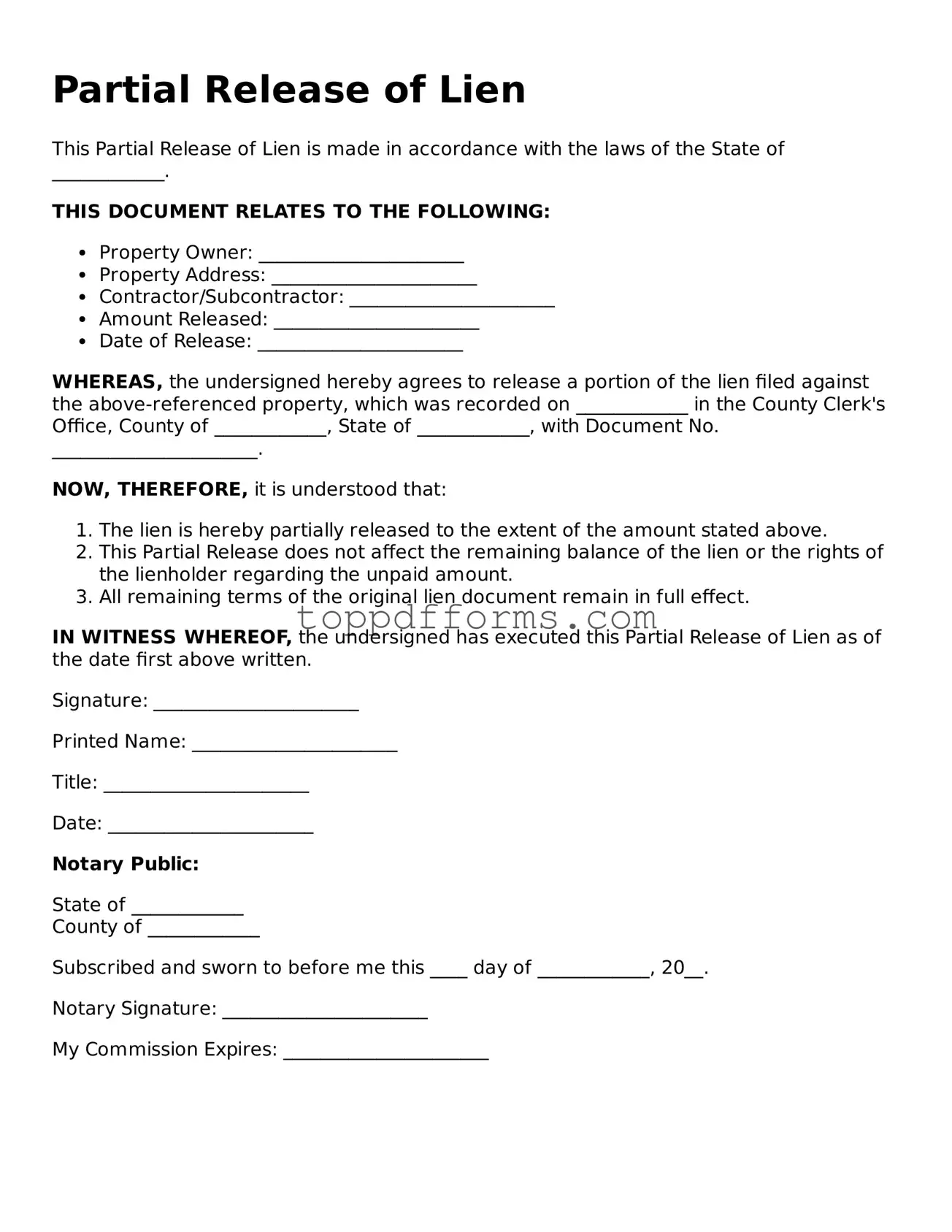When individuals or businesses fill out a Partial Release of Lien form, mistakes can easily occur, leading to potential delays or complications in the lien release process. Understanding these common errors can help ensure a smoother experience.
One frequent mistake is failing to include all necessary information. The form typically requires specific details such as the property address, the names of the parties involved, and the amount being released. Omitting any of this information can result in the form being rejected or delayed.
Another common error is not signing the form correctly. Each party involved must provide their signature, and it’s crucial that these signatures are not only present but also match the names listed on the form. Inconsistencies can create confusion and lead to legal issues.
People often neglect to date the form. A missing date can make it difficult to determine the timeline of the lien release, which is essential for record-keeping and potential disputes in the future. Always ensure that the date is clearly indicated.
In some cases, individuals may incorrectly assume that a Partial Release of Lien is the same as a full release. This misunderstanding can lead to confusion about the remaining obligations and rights associated with the lien. It’s important to clearly understand that a partial release only applies to a specific portion of the lien.
Another mistake is using outdated or incorrect forms. Legal documents can change over time, and using an old version may lead to complications. Always check to ensure that the most current form is being used.
People may also fail to provide adequate supporting documentation. A Partial Release of Lien often requires additional paperwork to substantiate the release. Without this documentation, the form may not be accepted.
Additionally, some individuals overlook the importance of notifying all parties involved. After submitting the form, it’s good practice to inform all relevant parties of the release. This step helps maintain transparency and avoids potential disputes down the line.
Another common error is not keeping copies of the submitted form. It’s essential to retain a copy for personal records. This can serve as a reference in case any issues arise in the future.
Lastly, people may fail to follow up on the status of the Partial Release of Lien after submission. It’s important to verify that the form has been processed and recorded appropriately. A lack of follow-up can lead to unresolved issues that could impact future transactions.
